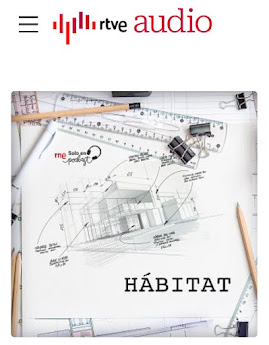Un detenido por portar un arma blanca; demandado por agresión en varias ocasiones; arrestado por golpear a pedradas a un agente de la autoridad y, finalmente, condenado por homicidio y lesiones graves durante una riña, fue, además, autor de algunas de las pinturas más excepcionales del barroco de todos los tiempos. Caravaggio era un delincuente y sin embargo, su obra resulta inmortal... ¿O tal vez no? ¿Deberían ser descolgados sus cuadros de los museos por sus abominables crímenes? El problema moral que asoma tras cada obra del pasado nos sitúa ante un vértigo difícil de soportar para la susceptibilidad occidental contemporánea...
La casa de
Philip Johnson, es decir, la casa que construyó como estudiante en Harvard como proyecto de graduación, ha pasado a denominarse "la casa en la que vivió Philip Johnson". Para la academia americana resulta intolerable que una de las figuras más importantes de la historia de la arquitectura de su país mostrase una familiaridad inaceptable con el nazismo. Para occidente toda figura cuyo nombre sea empleado en el espacio público debe ser ejemplar: "No nos detendremos aquí", ha dicho la Decana de Harvard. (Mientras se debate sobre eso con vehemencia, no hay declaración oficial alguna sobre los crímenes de lesa humanidad que se televisan hoy en todo el mundo) ¿Alguno de los actuales miembros del "Johnson Study Group" que trata hoy de "resituar" su figura -es decir, condenarle al ostracismo-, apelará en unos años a su condición homosexual en la búsqueda de referentes por parte de ese colectivo antes que a su intragable ideología? ¿Podrá eso resarcirle de sus inmorales actitudes supremacistas, antisemitas y misóginas? ¿Hace eso deplorable su casa de la calle 9 Ash, en Cambridge, que fue en realidad la primera "casa patio miesiana" construida de todo el mundo?
El legado de
Mies o
Le Corbusier pueden verse comprometidos si se estudian en profundidad sus ambigüedades. El haberse despedido en algunas de sus cartas con el saludo nazi, en el caso del alemán, o el haber colaborado lateralmente con el régimen de Vichy en el caso del pintor suizo, ¿desligitiman algunas de las obras maestras de la arquitectura moderna? ¿Debería dejar de enseñarse la obra de Mies en las escuelas de arquitectura por los dibujos que hizo del pabellón Alemán para la Feria Mundial de Bruselas de 1935 en los que ondeaba la bandera nazi?
Existen más frentes abiertos. El exceso de consumo energético de los inmensos vidrios simples empleados por el mismo Mies Van der Rohe, o el exceso de hormigón usado por Le Corbusier, les hace ser mirados hoy con ojos sospechosos a pesar del magisterio de su arquitectura. ¿Hasta dónde se producirá el juicio sumario al pasado? ¿Aguanta alguna obra actual las acusaciones en
el territorio de lo sostenible o de la equidad cuando habitamos en un mundo impuro?
A pesar de que se afanen por realizar candorosas declaraciones sobre el bienestar tecnopolítico, económico, social y ecológico de sus obras, ¿acaso alguien cree que próximamente no se analizarán, y hasta el extremo, el real consumo y desperdicio de energía, medios o la más ligera explotación laboral encubierta de los edificios erigidos por cada reputado decano o catedrático? ¿Se comprometieron ejemplarmente con la paridad de género o la equidad étnica del colectivo de los ferralistas, alicatadores o instaladores que construyeron sus edificios? Unas simples mediciones pueden dar al traste una carrera construida sobre un discurso que no se compadece con la realidad. ¿
Hasta donde debe llevarse esto? La obra concreta y los propios valores que es capaz de generar un edificio no importan si se considera este tema del valor como algo relativo. Y sin embargo ver la
dosis de mejora del lugar que ocupa, el matiz de sensibilidad que abre, la cantidad de verdad que ofrece esa obra de arquitectura, tal vez brindase alguna salida, aunque fuese provisional.
Parece más sencillo comprometerse con la crítica al pasado, considerado como algo refutable, que con la crudeza del presente. En fin, lo único claro es que Caravaggio no saldrá en nuestro auxilio.












,%20p.%20457.jpg)











































































































